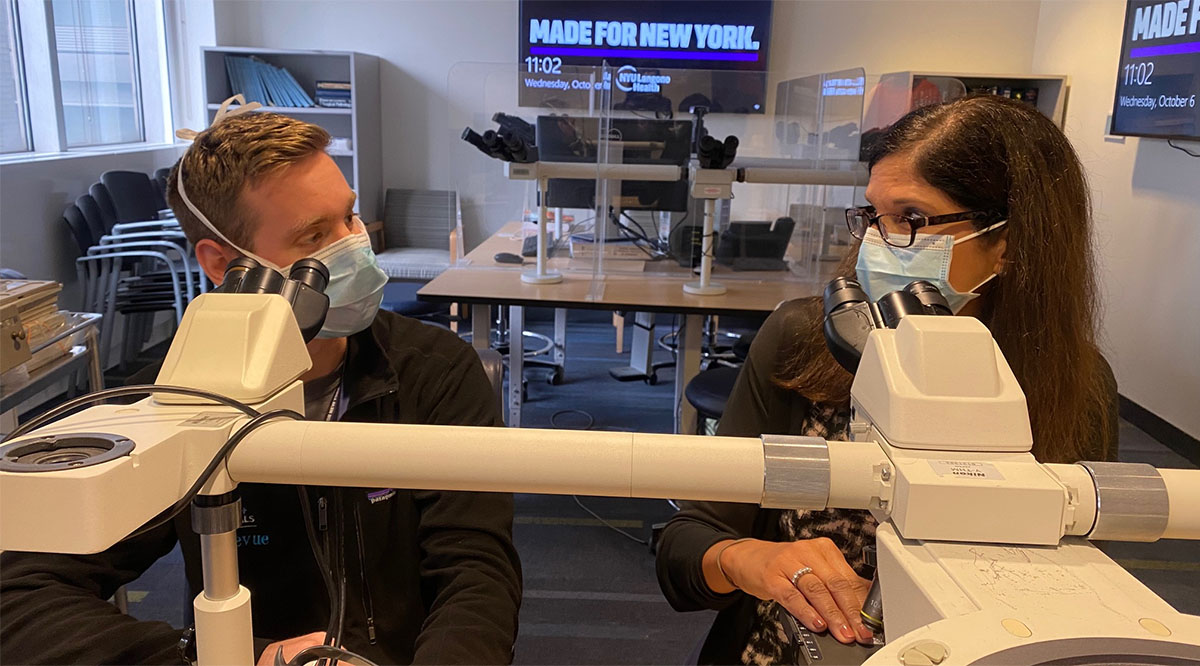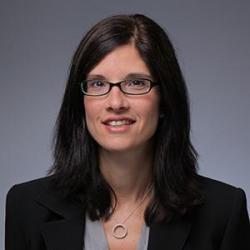
Editor's note: The opinions expressed by the author do not necessarily reflect the opinions of the AAMC or its members.
When Brit Trogen, MD, decided to become a doctor, she had no doubt she wanted to pursue pediatrics. Trogen had written about childhood diseases as a science journalist in Canada and New York, and she had spent three years producing health videos on topics like early brain development. Back in 2012, she’d even co-authored a children’s book about magical moths.
So, when Trogen learned about the three-year MD pathway at NYU Grossman School of Medicine in Manhattan, she was thrilled at the prospect of entering her chosen field one year earlier than she had thought possible.
In the past decade, hundreds of medical students like Trogen have trained in dozens of programs across the United States and Canada that graduate doctors in just three years.
Although it may sound unorthodox, accelerated medical education isn’t new. Two Canadian schools have been graduating physicians in three years for decades. And in the 1970s, the U.S. government urged medical schools to trim a year to help fill looming physician shortages. Approximately 25% did so, but the programs closed when shortages eased and federal funding disappeared.
Now, interest in three-year medical school programs is on the rise once again.
In 2012, the United States had only two accelerated MD programs. In 2014, the country had eight such programs, and the Consortium of Accelerated Medical Pathway Programs (CAMPP) launched with a Josiah Macy Foundation grant. Now, CAMPP counts 30 members that offer a fast-track program or plan to do so. Last year, more than 150 new students enrolled in three-year programs, according to CAMPP data.
Why are these accelerated programs so attractive?
For many, a key driver is mounting student loans. Among medical school grads with education debt, the median sum was $200,000 in 2019 — up from $160,000 in 2009, according to AAMC data. Calculating tuition savings and an extra year of salary, three-year students could reap a lifetime benefit of around $250,000. Importantly, reduced costs can make medical school more accessible to lower-income students and help increase the diversity of our workforce.
Three-year programs also help address worrisome physician shortages. The AAMC projects a shortfall of between 21,400 and 55,200 primary care physicians by 2033, and several three-year programs launched to help fill that need. Other programs aim to train providers who will work in rural or underserved communities. At Texas Tech University Health Sciences Center in Lubbock, for example, some 70% of graduates go on to serve in such areas.
“With so much to learn, how can medical students possibly graduate in three years?” That's a question I've heard many times.
Accelerated programs offer another upside: Year 4 of medical school tends to be filled with electives in different fields to help students decide on a future specialty. But some, like Trogen, already know.
In addition, the vast majority of three-year programs offer direct progression into residency at their affiliated teaching hospital. That’s a great plus for students who can save the time, money, and energy required of the residency application process. And home institutions’ residency programs offering their three-year graduates that option have grown over the years. While some are still limited to primary care, many have expanded to cover other disciplines.
Despite all these reasons that medical school in three years makes sense for some students, the approach still raises some doubts.
“With so much to learn, how can medical students possibly graduate in three years?” That's a question I've heard many times in my role as director of NYU Grossman’s accelerated program since its launch in 2013.
I like to respond with a different question: "Are you really sure every medical student needs a fourth year?"
How does it work?
Accelerated programs are not cookie-cutter.
Most are small, admitting fewer than nine students each year, but some accept more than 30. Most schools offer a three-year track within a traditional four-year program, but some provide acceleration to all students on a particular campus (Medical College of Wisconsin in Green Bay) or even to the entire school (NYU Long Island School of Medicine in Mineola, New York).
In addition to accepting students at the time of medical school matriculation, many programs let students apply at other points, such as at the end of their first year. Doing so allows them to solidify their specialty choice before beginning acceleration.
[Research] found that three-year pathway graduates felt as satisfied with their education and as prepared for residency as their four-year peers.
But no matter how programs work, they all focus on ensuring that learning isn’t compromised.
In fact, accelerated programs tend to run only 20 weeks shorter than traditional four-year programs. Getting to three years generally involves eliminating electives and requiring classes during the summer vacation between Years 1 and 2.
So far, evidence suggests that acceleration doesn’t harm performance. At NYU Grossman, we've found that three-year graduates do as well on pre-clerkship medical knowledge exams as four-year students, and they receive honors in their clerkships at the same rate. Other accelerated programs have shown that graduates perform similarly in residency when compared to their four-year peers in such measures as exams and progress toward residency milestones.
Students also report good experiences in accelerated MD programs. A study released in August found that three-year pathway graduates felt as satisfied with their education and as prepared for residency as their four-year peers.
Although you might expect acceleration to fuel burnout, the August study found that accelerated students’ burnout was no different than their four-year peers using such measures as exhaustion and negative attitudes toward medical school. That’s partly because programs focus a great deal on promoting student well-being. In addition, students at programs with direct progression from medical school into residency note reduced stress from not having to worry about a residency slot.
Programs also offer robust opportunities for students to connect with advisors and departmental faculty. These often include more-senior peer advisors and faculty in the residency departments where students plan to train. By the time participants graduate, these relationships are solidly established and students are familiar with their hospitals’ work environments, easing their transition into residency.
Of course, three-year MD pathways aren't for everyone.
The best-suited students are those who’ve had experiences and exposures that make them certain of the specialty they want to pursue. Excellent academics, good time management skills, and resilience are also key since there's little time to provide remediation. In most programs, though, students have the option of shifting over to their school’s four-year pathway if academic or personal challenges make completing the accelerated program problematic.
The future of three-year medical pathways
Though most three-year graduates continue on to residency in their school’s hospital system, not all do, so if accelerated pathways are going to thrive, residency programs across the country need to have confidence in these graduates. CAMPP therefore aims to educate more residency directors about three-year graduates to support their acceptance into a broader range of programs.
As education leaders learn more about these pathways and their positive outcomes, I predict that three-year programs will become commonplace. To get to that point, CAMPP stands ready to provide guidance to any school considering the development of an accelerated MD pathway.
Also crucial will be following the outcomes of three-year MD graduates over the next decade to monitor successes and any necessary areas of improvement.
So far, as-yet unpublished data we’ve collected suggest that faculty can’t distinguish three-year graduates from their four-year peers in key skills. And research shows that programs are producing graduates who feel prepared, well-trained, and happy — pretty great signs of initial success.
